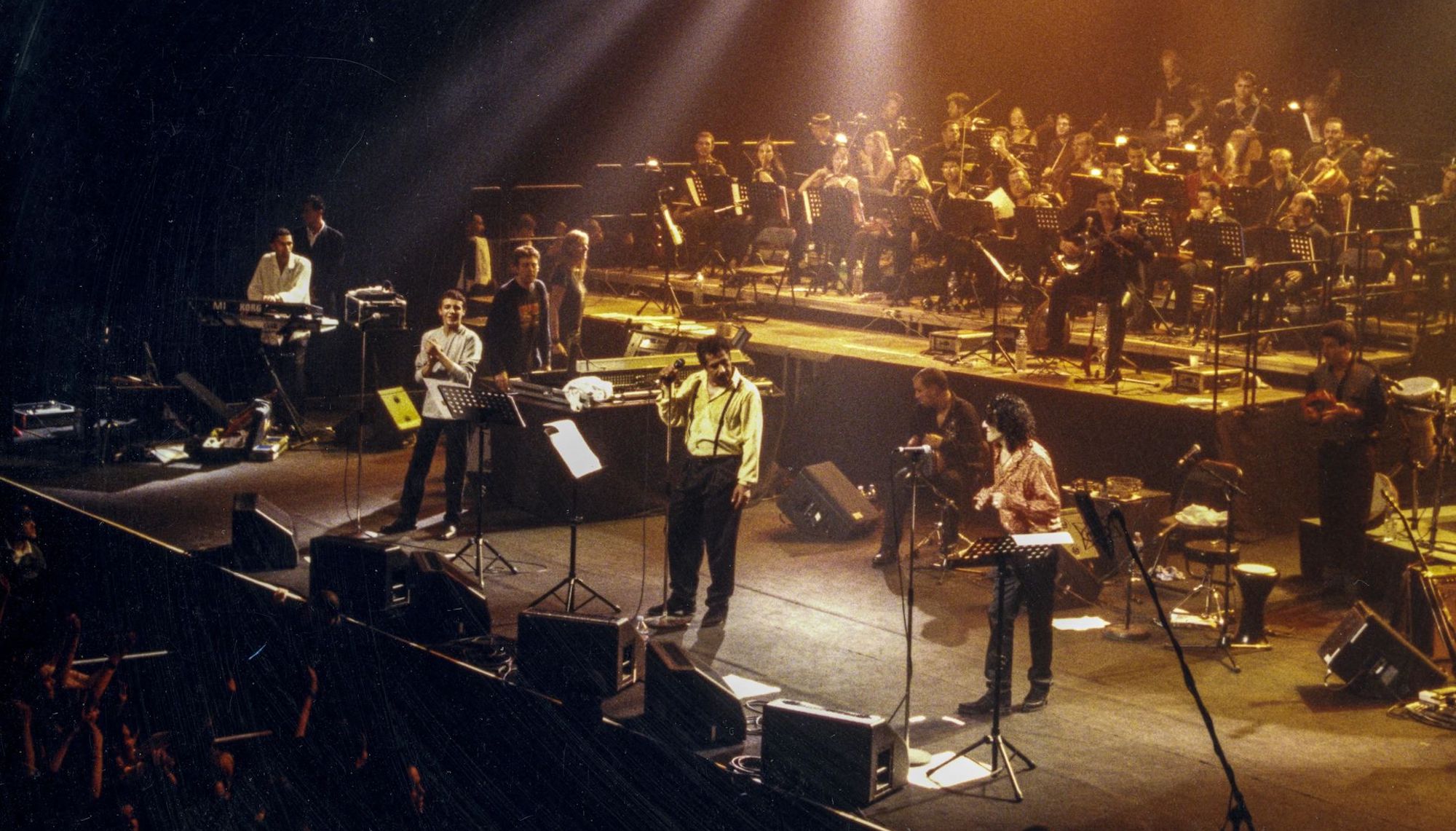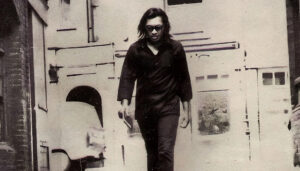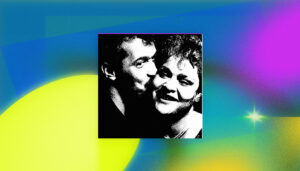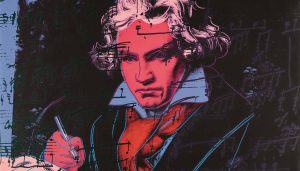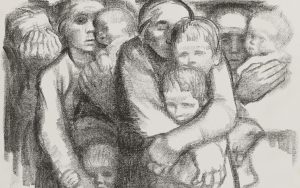Yazan Loujami
Most of the featured composers on this list share common qualities; their works are poorly published and documented, and rarely if ever professionally recorded. They also share a musical oeuvre present merely on the margins of Arab consciousness if not out of it entirely. One reason for that is the turbulent times they lived in, where music was expected either to sound “oriental”, or at least constructive in regards to a collectively approved cause, in other words, to fit in with the big constructed narrative about the East. This meant that classical music was still being dealt with as a sort of imported and occasional luxury, alienating its devotees into becoming an alternative side of Arab history, one that we might be ready to revisit.
We’re also forced to face the sad and unavoidable fact that most of these composers remained behind their contemporary international scene, a fact which cannot undermine their contribution, not only setting the ground for the next generation of Arab composers, but also working in difficult conditions, where they found themselves multitasking as soloists, pedagogues, conductors, and administrators, besides writing Arabic classical music from scratch.
Salvador Arnita (1914-1988)
Like the majority of first generation Arab composers, the Palestinian composer’s career was launched on a missionary backdrop, and as a continuation of an already established tradition in his hometown Jerusalem, where westernized music was written almost exclusively for liturgical purposes. But Arnita soon went from organist at the Church of the Holy Sepulchre to student at the Santa Cecilia Academy in Rome, where he studied in the 1930’s with Alfredo Casella, one of Italy’s most celebrated composers at the turn of the century.
Upon his return, the cultural landscape in British-controlled Palestine was rapidly changing; newly arrived European settlers were coming from some of the most advanced musical milieus, and were starting to monopolise classical music. The scene soon took an exclusionary Zionist turn, putting the handful of Arab classical musicians against an intellectual and ethical crisis, concerning classical music’s identity between a shared human heritage, and an exclusively western tool of colonial hegemony.
In 1948, the Nakba threw Arnita out of his homeland, where he worked with the American University of Beirut, as well as Arab and international orchestras in Cairo, Pittsburgh and Tanglewood, spending his last days in Amman. As a composer, he adopted an even more conservative tone than Casella’s, sticking to strict forms and a style closer to German romanticism. He also belongs to a problematic generation of Arab composers when it comes to their relation with the eastern heritage, their works usually either sound entirely western, or attempt to pair stereotypical Arabic melodies with basic common practice harmony, the orientalist way.
The second movement of Arnita’s first symphony of 1952 belongs to the first kind. The Andante Meditativo scored for strings demonstrates polyphonic craftsmanship and matured elaborate harmony, both impressive in comparison to other Arab composers of that epoch. It also hints at a probable familiarity with Schöenberg’s early works, with themes momentarily fluctuating on the verge of atonality before sliding back into key, and into lush lyricism reminiscent of Brahms.
Halim Al-Dabh (1921- )
Al-Dabh constitutes a very curious case on this list, belonging to one of 20th century’s very unique experimental currents. In his birthplace, Cairo, the composer knew a picturesque atmosphere where Arabic music of Sayed Darwish and Abdel Wahab was heard alongside recordings of Schöenberg and Varese, and where the spread of Radio coincided with the city’s golden era as the main center of Arab Modernity, hosting prominent musical figures such as Bartók, whom Al-Dabh might’ve attended during the first congress of Arab music in 1932.
In 1944, Al-Dabh recorded excerpts of the Zaar, a vernacular Egyptian exorcism ritual of music and dance, he then developed the recorded material into a kind of sonorous dreamscape never heard before. The expression of the Zaar was showcased during a cultural event in Cairo to become the precursor of what later became known as the musique concrète, a genre that uses recordings as the new raw material instead of traditionally notated themes.
By mid-century, historians were already celebrating Pierre Schaeffer as the inventor of musique concrète, ignoring Al-Dabh’s preceding experiments, maybe because his early works remained devoid of theoretical basis, or maybe because artistic avant-gardism at the time was still by definition a western endowment.
After moving to the United States in 1950, Al-Dabh soon became part of the New York scene and the Columbia-Princeton Electronic Music Center, collaborating with composers like John Cage. His work displays a strong local influence, and a whimsical imagination constantly questing and pursuing that what is hidden in every sound and every story, as in his tape Leila and the Poet, inspired by the popular Arabic tale of Majnoun Layla.
Toufic Succar (1922- )
The Lebanese composer was born in Tripoli, he then studied in Beirut with a group of French musicians who played a vital role in the musical development of Lebanon, and in 1952, he became one of the first Arab composers to graduate from the Paris Conservatoire. Upon returning to Beirut, Succar found himself facing a musical scene needing a lot of national infrastructure and innovation, so he went on a tiring and multifaceted educational mission at the head of the Lebanese Conservatoire of Music.
Succar delved in oriental music and Maronite hymns as much as western harmony, orchestration and counterpoint. Since the beginning of his career, as in the soundtrack of the movie whither?, Succar was among few who tried integrating oriental quarter tone in a harmonised classical context, an experiment that brought him a lot of attack by conservatives. However, some of these works like the Lebanese Popular Suite for string quartet confined quarter tone to its inherent folkloric formulas, sounding like a theoretical juxtaposition of traditional Arabic melodies on western school harmony with no added value, thus limiting its diffusion, unlike other contemporary models of mainly East Europeans such as Ligetti or Hába.
His daring experiments cover a wide stylistic spectrum, his unique orchestral suite Aksak Sima for instance, is a rare historic case of Arabic atonal music, incorporating oriental Aksak rhythms with haunting Viennese expressionism. The unusual outcome shows Succar’s daring, and the extent to which he was willing to go in reconciling eastern and western heritages.
Solhi Al-Wadi (1934-2007)
Born in Baghdad from a mixed Iraqi/Jordanian descent, Al-Wadi’s life has all it takes to make a true epic saga; After his youth in Alexandria, he spent most of his life in Damascus, where he single-handedly succeeded in founding the Arabic Institute, the Higher Conservatoire of Music, the Syrian National Symphony Orchestra in 1992, as well as cofounding the Damascus Opera House in 1990. The sudden ending of his career in Damascus 2002 was both terrible and iconic, when the National Orchestra was interrupted in the middle of the Largo from Beethoven’s 3rd piano concerto by al-Wadi collapsing onstage due to a stroke. Orchestra members spent their night at the hospital in concert dresses waiting for their conductor’s fate, as for Al-Wadi, he spend his remaining few years out of sight, almost entirely paralysed.
His oeuvre includes chamber music, orchestral works, as well as incidental music and soundtracks, but the relative difficulty of these works and the emotional aura surrounding his persona as a godfather of Syrian musical movement, both tend to automatically petrify him in an icon emptied of his artistic product, which is usually ignored, or blindly adored.
His early piano pieces from his study period at the London Royal Academy offer a new perspective on Arabic music, mostly inspired by Bartók; a composer that will mark Al-Wadi’s thought and music throughout his lifetime.
Today, listening to Al-Wadi’s music in its context seems both difficult and necessary, especially with the bloody regional events since the 1970s, and the severe boycott between his two homelands Syria and Iraq in 1979, all considered possible reasons behind the melancholic tone of his later works. His piano trio of 1975 dedicated to Dimitri Shostakovich illustrates this period, the second movement evokes the Soviet composer’s black violent sarcasm, while the third movement aims toward a wounded human statement, making the work a touching testimony of the general despair that characterised the region during the Cold War.
Dia Succari (1938-2010)
Coming from a reputed musical family in Aleppo, Dia Succari studied in his hometown before joining the world-famous composition class of Olivier Messiaen at the Paris Conservatoire.
He often approached complicated and unexplored subjects, as in his acousmatic work forget what you’ve been taught (1976) based on Arabic Sufi poetry, or Sact Al-Zind (1967), a work inspired by the so called book of the medieval poet Al-Ma’arri, and praised by Messiean for using Arabic rhythms and modes without “falling in folkloric reconstitution”. He also left considerable academic compositions ranging from children pieces to exercises still used at French and Belgian conservatoires. Most of his works were published and recorded in France, but only few of them found their way back east, usually the easy ones.
Succari’s work presents a contrasting experience to Al-Wadi’s, while the latter reinterpreted oriental music in abstract and forms inspired by the Soviet and East-European models, Succari treated the same heritage within the French aesthetics, prioritising resonance and colourful harmony, as in his virtuosic piano piece The night of destiny (1975). After the main theme’s exposition, modern notation techniques are used to write a semi-improvised middle section which sounds like the perfect mix of a traditional Oud intermezzo and a prelude by Ravel (2:30), the main theme is summoned again at the end, drained out of its former life and full of a cold ghostly haze instead (6:00).

